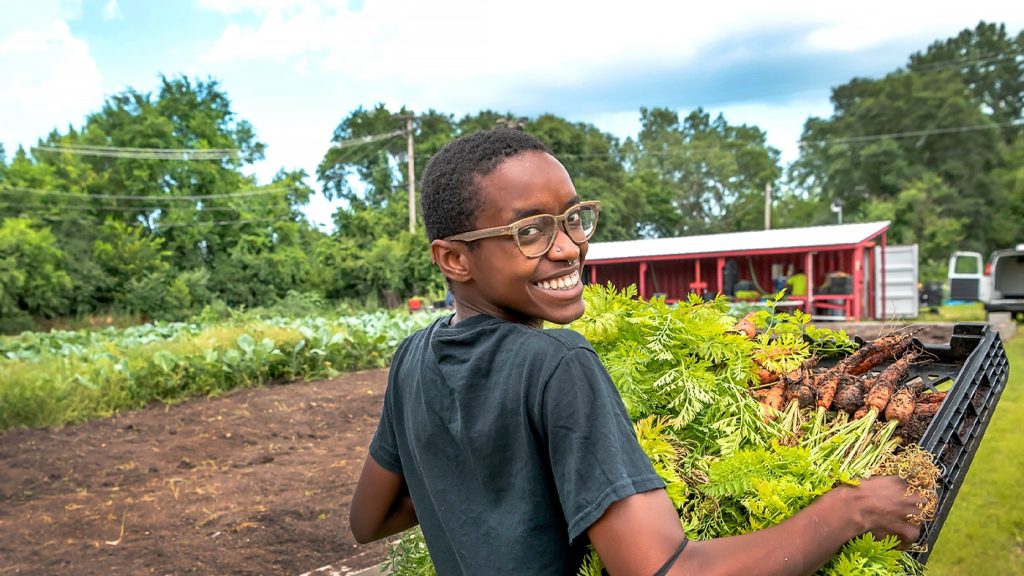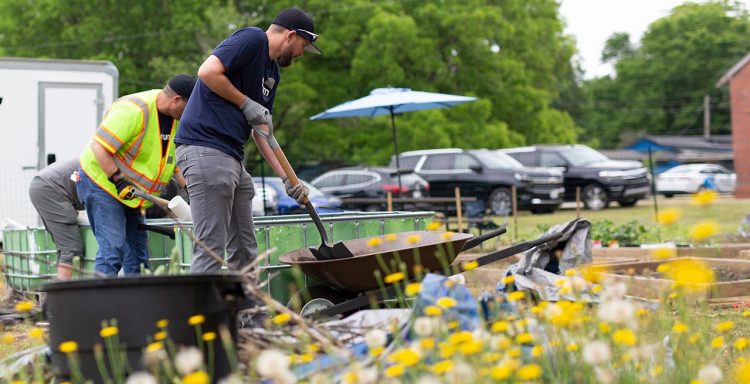In cities where concrete and chaos often define the rhythm of life, a quiet movement is taking root—one garden bed at a time. Urban gardening, once viewed solely as a solution to food insecurity and sustainability, is now emerging as an unexpected form of physical fitness. As more residents roll up their sleeves to dig, plant, weed, and harvest in community gardens, they’re discovering that this earthy endeavor does far more than yield fresh produce. It cultivates strength, endurance, flexibility, and mental well-being. This article explores how urban gardening is reshaping public health by functioning as a full-body workout while fostering community connection and purpose.
Digging Into Functional Fitness
Unlike the predictable motions of gym machines, gardening involves dynamic, full-body movements that mimic functional fitness training. Squatting to plant seeds strengthens leg muscles, lifting compost or soil builds core and upper-body strength, and repetitive raking or weeding enhances endurance and joint mobility. These activities require balance, coordination, and spatial awareness—all elements of a well-rounded fitness regimen. In fact, the Centers for Disease Control and Prevention (CDC) categorizes gardening as moderate-intensity physical activity, similar to brisk walking or cycling. An hour of active gardening can burn anywhere from 200 to 400 calories, depending on the tasks performed. What sets gardening apart is its immersive, purposeful nature: participants don’t realize they’re exercising because the focus is on tending to life.
Gardeners Who Grew Stronger—Literally
Stories from urban communities across the globe reveal the transformative physical impact of gardening. In Detroit, where community gardens have flourished as part of the city’s revitalization, 68-year-old Theresa Williams shares how working in her neighborhood’s garden reversed her pre-diabetic condition and helped her lose 25 pounds. “I used to dread walking,” she says. “Now I walk a mile just to check on my tomatoes.” In New York’s Lower East Side, 35-year-old Carlos Mendez, a former warehouse worker recovering from a back injury, credits raised-bed gardening with rebuilding his core strength. “I couldn’t bend for months. Now I can dig for an hour straight without pain,” he beams. These are not isolated anecdotes; they echo the broader trend of people reclaiming mobility, stamina, and health by reconnecting with the soil.
Strength and Sweat Behind the Beauty
Urban gardening is often perceived as a gentle pastime, but anyone who’s pulled stubborn roots from clay soil or hoisted water jugs under the summer sun knows it’s physically demanding. Turning compost can feel like kettlebell training. Hauling mulch mimics weighted carries. Pruning overhead plants improves shoulder flexibility, while planting rows cultivates balance and lower-body control. These actions engage major muscle groups—quadriceps, hamstrings, glutes, biceps, and abdominals—without requiring a single dumbbell. Moreover, the diversity of gardening tasks ensures that no two “workouts” are the same, reducing the risk of overuse injuries and monotony that can come with repetitive exercise routines.
Mental and Emotional Gains That Match the Physical
Beyond muscle and motion, urban gardening offers profound mental health benefits that compound its impact as a wellness practice. Spending time in green spaces reduces cortisol levels and improves mood, according to numerous studies. The combination of physical activity and nature exposure—a phenomenon known as “green exercise”—is especially effective in combating depression, anxiety, and chronic stress. Gardening requires mindfulness: attention to texture, smell, weather, and timing. It pulls individuals away from screens and toward sensory presence. For many city dwellers experiencing burnout, gardening becomes a therapeutic ritual of restoration and focus. In addition, the sense of accomplishment from nurturing growth contributes to self-esteem and motivation—cornerstones of a sustainable fitness journey.
A Workout That Builds Community
Community gardens offer more than individual fitness gains—they cultivate collective health. Gardening alongside neighbors strengthens social ties and accountability. Residents who may not otherwise exercise alone are more likely to show up when they know others are counting on them. These shared spaces serve as outdoor gyms without mirrors or intimidation, welcoming participants of all ages, body types, and skill levels. In neighborhoods lacking access to recreational facilities, they provide an equitable and inclusive setting for physical activity. Moreover, the intergenerational and multicultural nature of community gardening fosters rich exchanges of knowledge and camaraderie, adding emotional nourishment to the physical exertion.

Designing a Garden-Based Fitness Routine
To maximize the physical benefits of gardening, consider approaching your plot as a weekly fitness circuit. Here’s a sample framework:
- Warm-Up (5–10 mins): Gentle stretches or walking laps around the garden to loosen joints and increase blood flow.
- Strength Training (20 mins): Lifting compost bags, digging soil, carrying watering cans. Alternate sides for balance.
- Cardio Burst (10 mins): Raking vigorously, turning compost, hoeing weeds. Maintain a brisk pace.
- Flexibility & Core (10 mins): Low squats for planting, reaching overhead for pruning, controlled bending for harvesting.
- Cool Down (5 mins): Deep breathing, mindful observation of plants, light stretching.
By rotating tasks and working different sections of the garden, individuals engage multiple muscle groups and avoid repetitive strain. Tracking progress—whether through journaling, photography, or measuring harvests—also builds motivation and satisfaction.
Overcoming Barriers to Access and Participation
While urban gardening offers immense health potential, not everyone has equal access to space, tools, or knowledge. To bridge this gap, cities and nonprofits are creating programs that provide raised beds for people with mobility limitations, offer beginner workshops, and loan gardening equipment. Mobile gardens on rooftops, balconies, and vacant lots expand possibilities in dense areas. Community outreach that emphasizes the dual benefits of fresh food and fitness helps attract participants from diverse backgrounds. Inclusive signage, multilingual guides, and intergenerational mentorship further ensure that gardening becomes a truly accessible path to health.
Children, Elders, and Everyone in Between
Gardening is uniquely adaptable for people across life stages. For children, it promotes motor development, focus, and a healthy relationship with food. Schools that incorporate garden-based learning see improvements in student behavior, attention span, and physical activity levels. For seniors, gardening supports joint mobility, balance, and cognitive engagement. Raised beds and ergonomic tools make gardening manageable and safe for older adults. Middle-aged adults balancing work and family life find gardening a rare opportunity for movement that doesn’t require gym memberships or rigid schedules. The garden meets each person where they are—and grows with them.
The Future of Fitness Might Be Green
As urban landscapes evolve, the future of fitness may be less about machines and more about mulch. Already, some wellness centers and health clinics are prescribing gardening as part of integrative treatment plans. “Green prescriptions,” which encourage outdoor activity like gardening or walking in nature, are being trialed in countries such as the UK, Australia, and Canada with promising results. Urban planners, too, are integrating edible landscapes into parks and public spaces, recognizing their multifaceted health value. If cities embrace urban gardening not just as a food system solution but as a public health asset, we could see a paradigm shift where gardens double as open-air fitness centers—and community wellsprings.
Conclusion
Urban gardening is far more than a hobby; it’s a dynamic, holistic, and inclusive way to improve physical and mental health. As individuals dig into the earth, they’re also cultivating strength, resilience, and connection. The garden is no longer just a source of sustenance—it’s a sanctuary of sweat, a space for healing, and a gym where no membership is required. In a world that increasingly separates people from nature and from each other, community gardening brings us back to our roots—while giving our bodies the workout they didn’t know they needed.

















































